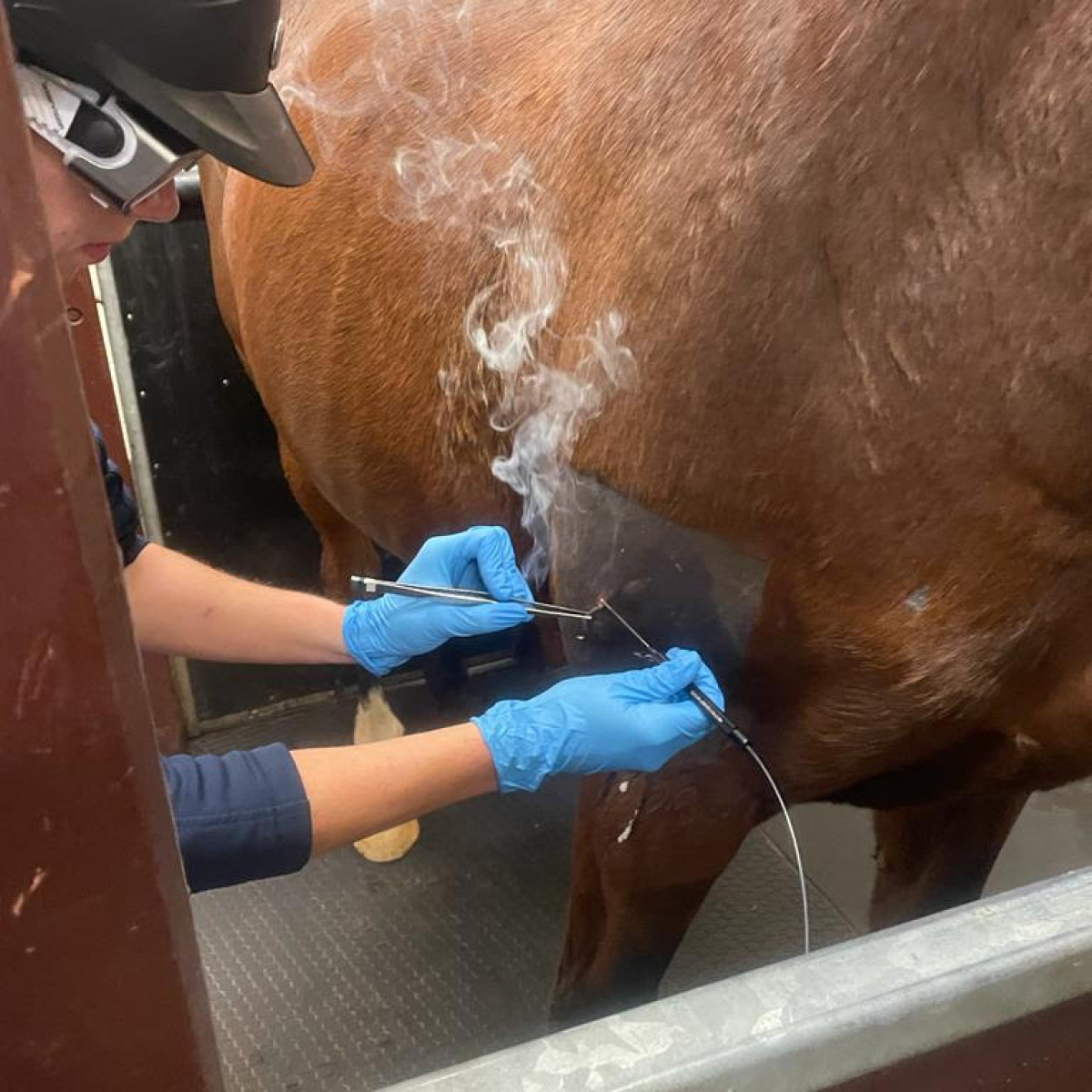Discover the Outstanding Benefits of Equine Therapy for Emotional Healing
Discover the Outstanding Benefits of Equine Therapy for Emotional Healing
Blog Article
Examining the Effectiveness of Laser Treatment in Horse Treatment for Injury Recovery
The examination of laser treatment's effectiveness in equine injury rehabilitation hinges on several aspects, consisting of recuperation time, discomfort reduction, and cells regeneration. Veterinarians frequently observe exceptional results with laser therapy compared to traditional techniques, positioning it as a vital component in equine treatment.
Comprehending Laser Therapy
Laser therapy has become a critical tool in vet medication, specifically in the therapy of equine conditions. Understood for its non-invasive nature and effectiveness, laser therapy involves the application of particular wavelengths of light to stimulate tissue repair work and decrease inflammation. This healing method is significantly preferred for its capability to accelerate the healing procedure in steeds experiencing from a variety of bone and joint injuries and persistent conditions.
The primary device behind laser therapy is its capacity to enhance mobile functions. When laser light penetrates the skin, it is taken in by mitochondria, the powerhouse of cells, which results in increased manufacturing of adenosine triphosphate (ATP) This biochemical energy increase facilitates cellular fixing and regeneration. Additionally, laser therapy advertises vasodilation, improving blood flow and oxygen distribution to damaged tissues, therefore speeding up recuperation.
In equine medication, laser therapy is especially valuable for problems such as tendonitis, osteoarthritis, and wound healing. The method is admired for its pain-relieving residential properties, permitting horses to restore wheelchair and feature extra rapidly. Veterinarians also appreciate its very little negative effects compared to other treatment modalities, making it a trustworthy and secure alternative for equine care.

How Laser Therapy Functions

Upon absorption, these photons cause a collection of biochemical changes, enhancing mitochondrial feature and causing boosted adenosine triphosphate (ATP) production. This surge in ATP speeds up cellular metabolic rate, advertising tissue fixing and regrowth. Additionally, laser treatment modulates inflammatory responses by influencing cytokine levels and reducing oxidative stress and anxiety, thus reducing discomfort and swelling.
One more significant facet of laser therapy is its duty in enhancing microcirculation. The treatment promotes vasodilation, boosting blood flow and oxygen distribution to damaged cells (Equine Therapy). This helps with the elimination of cellular particles and supports the spreading of fibroblasts and collagen synthesis, essential for injury healing
Professional Evidence
The effectiveness of laser treatment in equine therapy has actually been confirmed through various medical research studies, showcasing its restorative possible throughout an array of problems. A research performed by Turner et al. (2012) showed that steeds treated with low-level laser treatment (LLLT) for ligament injuries showed increased recovery contrasted to those obtaining conventional therapies.
Similarly, research by Johnson and colleagues (2015) link focused on equine muscle injuries, revealing that laser therapy considerably sped up muscle mass fiber regeneration and reduced muscle tightness. These findings were supported by histological evaluations revealing enhanced muscle tissue organization. Clinical assessments have actually revealed that laser treatment can minimize chronic problems such as osteo arthritis. A research study by Smith et al. (2018) reported that horses with osteoarthritic joints experienced notable discomfort relief and increased series of movement complying with a regimen of laser treatment sessions.
Veterinarian Insights

Veterinarians likewise appreciate the adaptability of laser treatment. It can be utilized for a variety of problems, from shallow injuries to deeper musculoskeletal injuries. Dr. Emily Brown highlights its utility in treating conditions like tendonitis and osteo arthritis, where standard therapies frequently fail. She explains that laser treatment can be customized to the details demands of each steed, making certain optimum results.
Moreover, vets value the capacity to integrate laser therapy with various other therapy modalities. This multimodal method can enhance total therapy effectiveness, providing a thorough option for equine rehabilitation. Such endorsements from skilled experts underscore the expanding acceptance and application of laser therapy in equine medication.
Practical Considerations
A vital element of executing laser treatment in equine treatment entails recognizing the functional considerations that you can try these out guarantee its effectiveness and safety. It is essential to pick the suitable laser tool, as different kinds differ in wavelength, power, and infiltration deepness. Veterinarians have to be well-versed in these criteria to tailor therapy methods efficiently per injury type
Additionally, the regularity and duration of laser treatment sessions need cautious preparation to maximize restorative advantages while minimizing any type of possible adverse impacts. Regular monitoring of the horse's action to therapy can guide needed changes in the check here therapy regimen. Establishing a risk-free and regulated environment during treatments is additionally necessary to avoid unintended exposure to laser emissions, which might damage both the horse and the handler.
Educating and qualification of employees carrying out laser treatment are critical to guarantee appropriate method and to maintain safety and security criteria. Additionally, maintaining accurate records of each session, including laser settings and observed outcomes, is important for assessing the general efficiency of the therapy and for making data-driven choices.
Verdict
Laser treatment has actually arised as an efficient technique in equine injury rehabilitation, offering substantial benefits in recovery time, discomfort alleviation, and cells recovery. Medical research studies underscore significant renovations in problems such as tendonitis and osteo arthritis, associated to improved cellular function and enhanced ATP manufacturing. Vet monitorings substantiate these searchings for, highlighting premium results compared to traditional treatments. For ideal results, continuous surveillance and personalized treatment methods stay vital in leveraging the full possibility of laser therapy in equine treatment.
Report this page